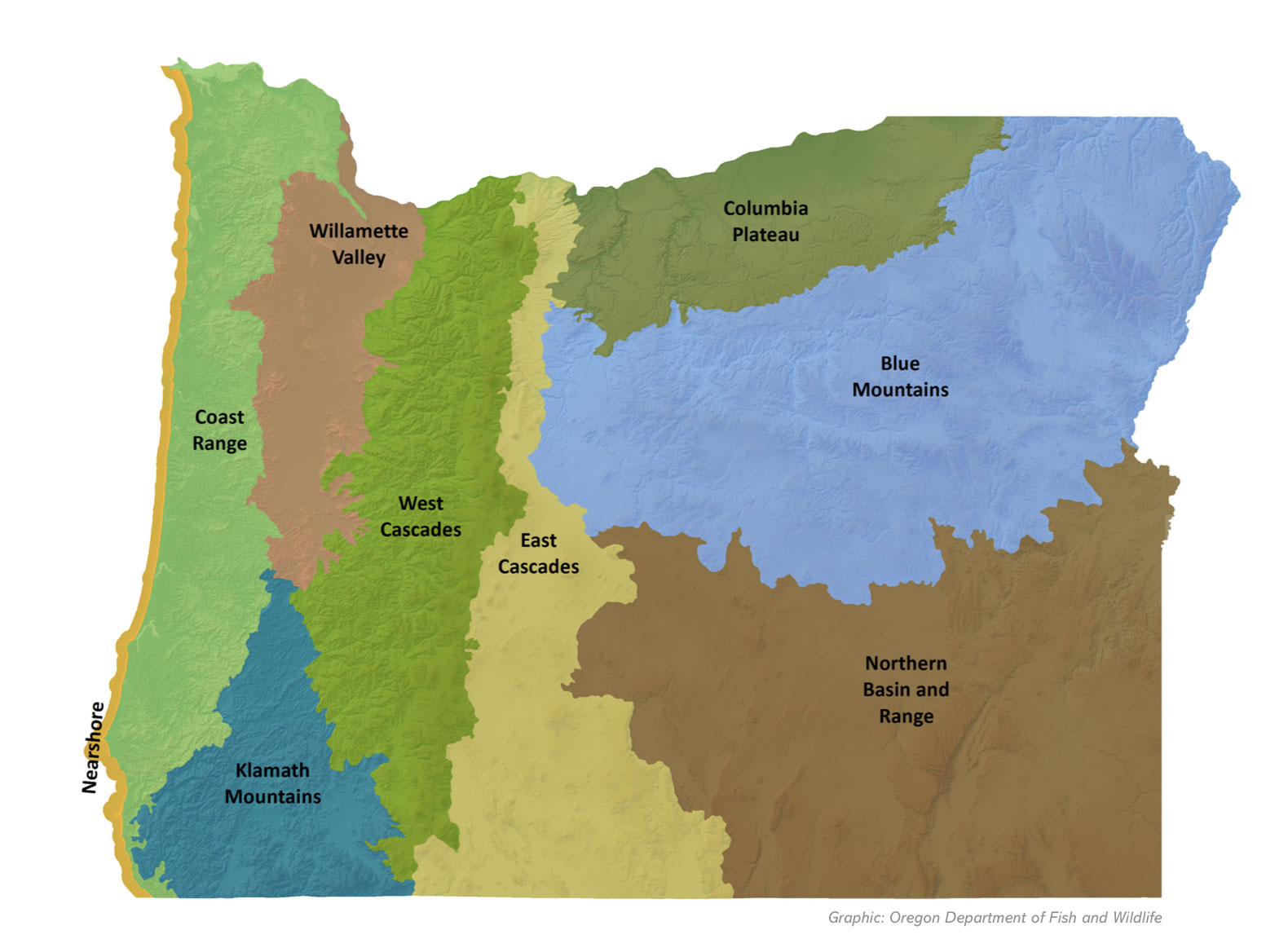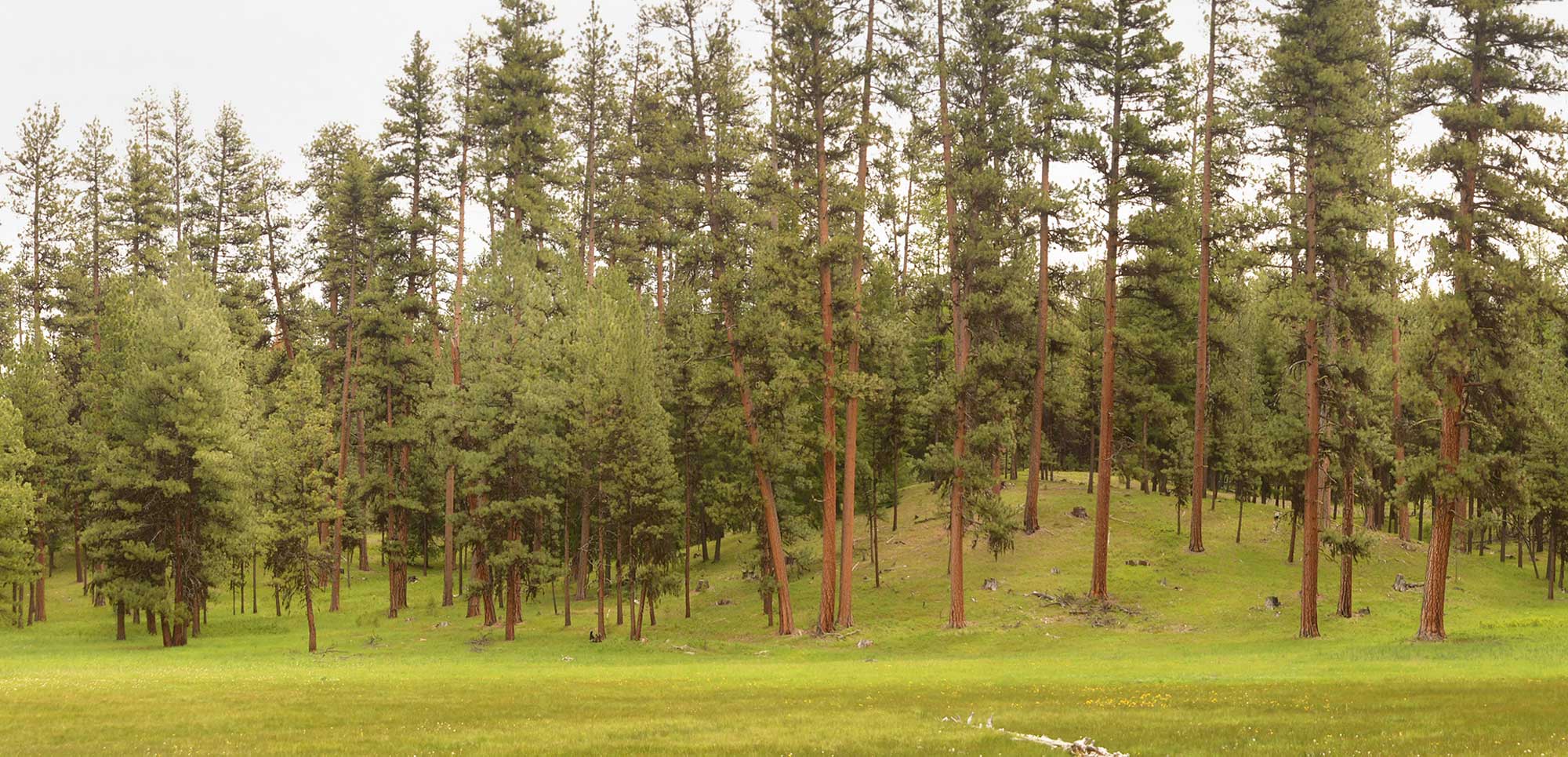Ecoregions are areas defined by unique combinations of climate, geology, vegetation and wildlife. Understanding your ecoregion can help you make informed decisions about managing your land to support local biodiversity and maintain ecosystem health. By aligning your actions with the specific needs of your ecoregion, you can promote thriving wildlife habitats and sustainable landscapes.

Northern Basin and Range
The Northern Basin and Range ecoregion is often referred to as sagebrush country, characterized by expansive shrublands and grasslands. Forests in this ecoregion are sparse and primarily concentrated in higher elevations, such as isolated mountain ranges and ridges.
Blue Mountains
Oregon’s Blue Mountains ecoregion is a wonderland of mountain ranges, valleys and plateaus.
Coast Range
Oregon’s Coast Range ecoregion is made up of unique and diverse habitats ranging from sandy dunes to lush forests, from tidepools to mountain streams, and from grasslands to oak woodlands.
Columbia Plateau
The Columbia Plateau, made up entirely of lowlands, is — and has been — greatly influenced by the Columbia River.
East Cascades
The East Cascades ecoregion extends from just east of the Cascade Range summits to the warmer, drier high desert to the east.
Klamath Mountains
The Klamath Mountains ecoregion boasts a wonderful diversity of species, including many species found only locally. Conservation efforts here often involve protecting rare plant communities and managing invasive species.
West Cascades
Shaped by volcanic activity, the West Cascades ecoregion includes towering conifer forests and cold mountain streams that support trout and amphibians.
Willamette Valley
The most urban ecoregion in Oregon, the Willamette Valley ecoregion contains nine of the state’s 10 largest cities. Despite its urbanization, it supports unique habitats such as oak savannas and wetlands.
ADDITIONAL RESOURCES:
PUBLICATIONS
A Guide to Priority Plant and Animal Species in Oregon Forests
This publication from the Oregon Forest Resources Institute is organized by ecoregion, and may be helpful for learning more about the species habitats found in your ecoregion.
OTHER
The Oregon Department of Fish and Wildlife Conservation Strategy
The Oregon Conservation Strategy is an overarching plan to conserve Oregon’s fish and wildlife and their habitats. It combines the best available science and conservation priorities with recommended voluntary actions and tools to help Oregonians define their own roles in wildlife conservation efforts.
Need more assistance?
Local Assistance Map
Find a Subject Matter Expert
Heading 2
Heading 2 bold
Heading 3
Heading 3 bold
Heading 4
Heading 4 bold
Heading 5
Heading 5 bold
Heading 6
Heading 6 bold
paragraph
Paragraph bold

